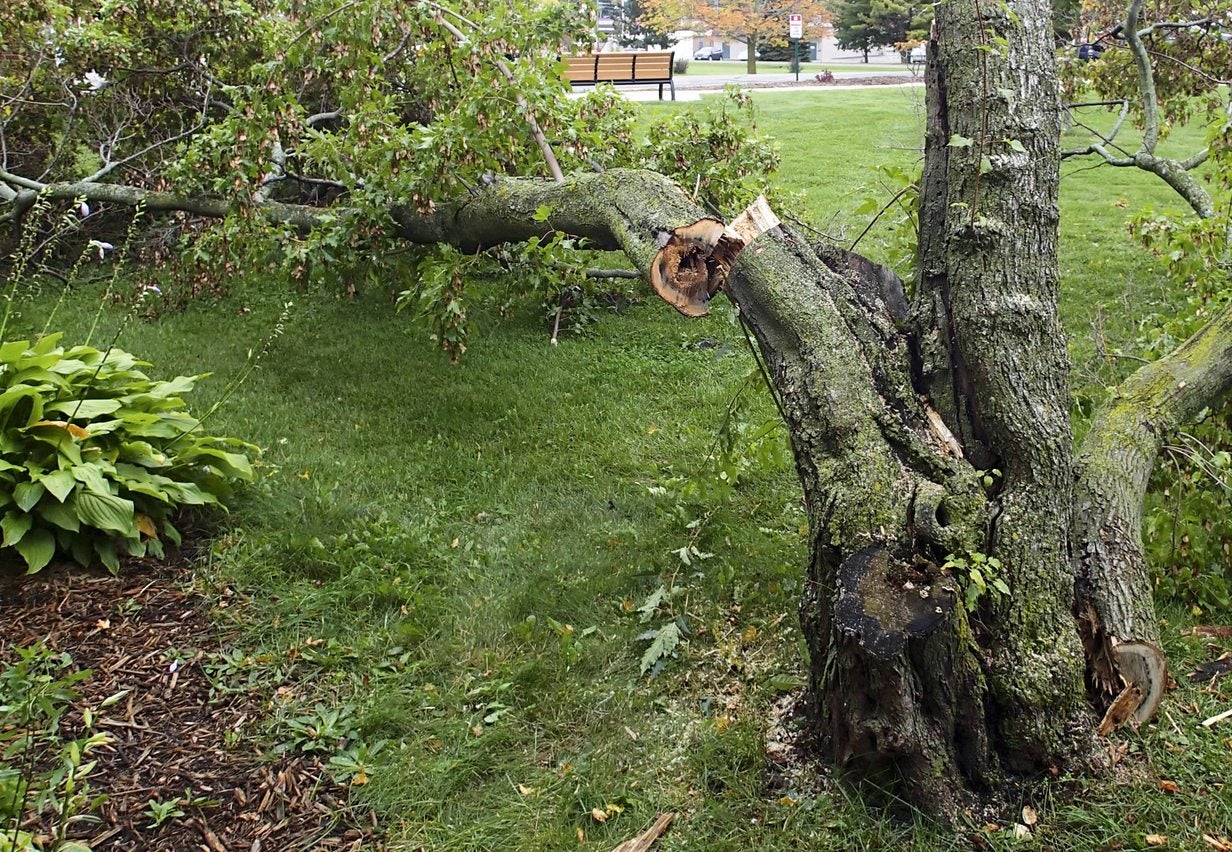Wind Damaged Plants: Tips On Helping Plants After A Tornado


When winter weather gets wild and windy, trees can suffer. If a tornado hits your area once warmer weather returns, you may see extensive damage to your plants and garden, even if your house is spared. Tornado damage in gardens can be devastating. It can appear that all of your plants are lost. With a little effort, though, some wind damaged plants may survive. Read on to learn how to save plants after a tornado.
Assessing Wind Damaged Plants
Following a huge windstorm or a tornado, your first step will be to assess the damage to your trees. Although garden plants may also be damaged, assess damaged trees and large shrubs first since broken limbs may be dangerous. Helping plants after a tornado is second to your family’s safety. So assess whether tornado plant damage to trees and shrubs have created risks to your home or family.
Evaluate broken trunks and split branches to see if they are threatening a structure or a power line. If so, remove them as quickly as possible. If the job is too large for you to handle, call in for emergency tree removal assistance.
If tree trunks or huge branches are broken, the tree or shrub may not be salvageable. The bigger the tornado plant damage to a tree, the lower its chances of recovery. A tree or shrub that holds onto half of its branches and leaves may very well recover.
After you have removed garden trees that cannot be saved, you can review the other tornado damage in gardens. It’s time to learn how to save plants after a tornado.
Trees and shrubs that can be saved will need help. Prune off hanging branches or broken branch tips, making the cuts just above branch buds. Bolt together main trunk sections that are split. For tornado damage in gardens to smaller plants, the process is quite similar. Inspect wind damaged plants, keeping an eye out for broken stems and branches.
How to save plants after a tornado? You’ll want to prune off the damaged sections of stems and branches. That doesn’t apply with equal force to leaves, however. When it comes to shredded leaves, allow as many to remain as you can since they’ll be needed for photosynthesis.
Gardening tips, videos, info and more delivered right to your inbox!
Sign up for the Gardening Know How newsletter today and receive a free copy of our e-book "How to Grow Delicious Tomatoes".

Teo Spengler is a master gardener and a docent at the San Francisco Botanical Garden, where she hosts public tours. She has studied horticulture and written about nature, trees, plants, and gardening for more than two decades. Her extended family includes some 30 houseplants and hundreds of outdoor plants, including 250 trees, which are her main passion. Spengler currently splits her life between San Francisco and the French Basque Country, though she was raised in Alaska, giving her experience of gardening in a range of climates.
-
 ‘Coral Charm’ Peony Care For Sublime Semi-Double Peonies With Lush Salmon Pink Flowers
‘Coral Charm’ Peony Care For Sublime Semi-Double Peonies With Lush Salmon Pink FlowersPeonies are known for their soft baby pink or magenta tones, but if plushy coral blooms are your thing, here’s our guide to the ultimate ‘Coral Charm’ peony care
By Tonya Barnett
-
 How To Grow Seeds Quickly: 8 Expert Tricks For Fast Flowers & Crops
How To Grow Seeds Quickly: 8 Expert Tricks For Fast Flowers & CropsIt's never too late to start growing! Jump-start your flower or vegetable garden with these pro tips and tricks for germinating seeds in record time.
By Amy Grant